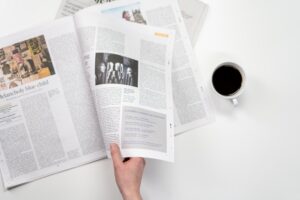Rev. Proc. 2020-25 The "Retail Glitch" Fix: Implementation
On Friday, April 17th, 2020, the Internal Revenue Service posted Rev. Proc. 2020-25 to its website. This new revenue procedure provides guidance on how taxpayers can fix the “retail glitch” that was retroactively corrected by H.R. 748, the Coronavirus Aid, Relief, and Economic Security (“CARES”) Act, Public Law No. 116-136. Rev. Proc. 2020-25 also modifies the scope of several existing automatic change procedures and provides automatic method change procedures to make certain late elections or withdraw or revoke those elections. For our prior discussion of QIP and the changes made by the CARES Act.
The "Retail Glitch" Fix: Procedures
As discussed in our prior post, Qualified Improvement Property (“QIP”) posted December 31, 2017, 1 is any section 1250 improvement to an interior portion of a 39-year nonresidential real property building if the improvement is placed in service by the taxpayer after the date the building was first placed in service by any person.2 Some improvements are excluded. Excluded improvements include the expansion of a building;3 any elevators or escalators;4 or, the internal structural framework of the building5. The CARES Act retroactively assigned QIP a 15-year recovery period, (20-year under the Alternative Depreciation System (“ADS”)), with straight-line depreciation.6 As 15-year property, QIP generally would qualify for bonus depreciation.7 The CARES Act also clarified that QIP only includes improvements made by the taxpayer, not pre-acquisition improvements made by prior owners.
Which QIP?
Rev. Proc. 2020-25 applies only to QIP placed in service by the taxpayer after December 31, 2017 and in the 2018, 2019, or 2020 taxable years.8 These taxable years are the taxpayer’s years ending in 2018, 2019, and 2020.9 Not all QIP placed-in-service during these years are within the scope of this revenue procedure.
- If the QIP’s depreciation treatment changes due to a late election, or a withdrawn election, under either Code § 163(j)(7)(B) (electing real property trade or business) or (C) (electing farming business), those changes will take place under Rev. Proc. 2020-22.10.
- Similarly, if the taxpayer deducted the cost of the QIP as an expense, the QIP is outside the scope of this revenue procedure.
What Changes?
Under Rev. Proc. 2020-25, taxpayers are restricted to changing QIP to a 15-year (or 20-year if ADS) recovery period, straight-line depreciation method, or half-year (or mid-quarter if applicable) convention.11 If the QIP otherwise qualifies for TCJA or PATH Act bonus depreciation, it may claim that depreciation under this automatic change procedure (assuming Rev. Proc. 2020-22 does not apply).
How to Make the Changes?
This revenue procedure provides two basic ways of implementing the change: amending returns or filing a Form 3115.12
- A taxpayer may generally file an amended return for the placed-in-service year of the QIP on or before October 15th, 2021. If the period of limitations on assessment closes prior to October 15, 2021, the amended return cannot be filed later than that date. A BBA partnership that either chooses to file an Administrative Adjustment Request (“AAR”) or is outside the scope of Rev. Proc. 2020-23, must file the AAR before October 14, 2021. Similar to an amended return, the AAR may not be filed later than when the period of limitations on making adjustment under Code section 6235 closes. The amended return or AAR must reflect the adjustment to taxable income for the depreciation change and any other collateral adjustments. Subsequent tax years, whether on original returns, amended returns, or AARs, must include collateral adjustments.
- Alternatively, a taxpayer may file a Form 3115, Application for Change in Accounting Method using new Designated Change Number (“DCN”) 244 with its timely filed tax return. Just as under section 6.01 of Rev. Proc. 2019-43, the taxpayer can include QIP placed-in-service in the taxable year immediately prior to the year of change under a special One-Year Qualified Improvement Property rule. Just as we discussed in our prior post, the scope of Rev. Proc. 2020-25 is broader than section 6.01 of Rev. Proc. 2019-43, most notably eliminating the UNICAP compliance requirement for these costs. This new automatic change procedure also waives the prior 5-year item change and final year of a trade or business eligibility rules.13 Unfortunately, it does not appear that all QIP-related changes fall under the scope of this new automatic change procedure. If a taxpayer treated improvements placed in service prior to its acquisition of the building as 15-year QIP, whether eligible for bonus or not, and needs to treat these costs as 39-year property, the taxpayer would be required to use the more restrictive section 6.01 of Rev.Proc. 2019-43.
Other Changes to Rev. Proc. 2019-43
The “retail glitch” fix QIP rules also required modifications to other sections of Rev. Proc. 2019-43.
- Section 6.01 (DCN 7) was modified to remove post-2017/pre-2021 QIP as well as changes under Rev. Proc. 2020-22.
- Sections 6.04 and 6.05, both of which involve changes-in-use, were modified to scope out changes under Rev. Proc. 2020-22.
- Rev. Proc. 2015-56’s Remodel-Refresh Safe Harbor was modified to take into account post-2017 QIP.
Late and Revoked or Withdrawn Elections
Late Elections
If a taxpayer placed in service depreciable property in its 2018, 2019, or 2020 taxable year and timely filed the return in which the property was placed in service prior to April 17th, 2020, the taxpayer may file an amended return, AAR, or Form 3115 using new DCN 245 to make a late election. There are similar timing rules to the provisions for QIP changes and requirements for corollary adjustments. These late elections are available only if the taxpayer has not previously revoked the elections under Rev. Proc.2020-25.
Revoked or Withdrawn Elections
For a specified plant election or the election not to claim bonus depreciation, if a taxpayer placed in service depreciable property in its 2018, 2019, or 2020 taxable year and timely filed the return in which the property was placed in service prior to April 17th, 2020 and made either of these elections, the taxpayer may file an amended return, AAR, or Form 3115 using new DCN 245 to make a revoke the elections. For a taxable year that includes September 28the, 2017 where the taxpayer either made the election to deduct only 50% bonus depreciation (or later made the election using Rev. Proc. 2019-33), taxpayers may use similar procedures to revoke that election. Similarly, taxpayers that made an ADS election for the 2018, 2019, or 2020 tax years may withdraw that election using these procedures. There are similar timing rules to the provisions for QIP changes and requirements for corollary adjustments. Please note that these elections may only be made for the first or second year after the taxable year of the late, revoked, or withdrawn election.15
Practice Note: For bonus depreciation purposes, post-2017 QIP is not a separate class of property for purposes of electing out of bonus depreciation. If a taxpayer was deemed to elect out of bonus depreciation under Rev. Proc. 2019-33 for its taxable year that included September 28th, 2017, but which ended after December 31, 2017, the taxpayer may need to examine its 2017 return to see if it should use DCN 245.
Why These Changes?
Taxpayers are being given a second bite at the apple with respect to the elections previously covered by Rev. Proc. 2019-33. For the ADS election, it has come to our attention (and the attention of the IRS Office of Chief Counsel), that many taxpayers that made the section 163(j)(7)(B) election treated 15-year land improvements or other classes of property as ADS property ineligible for bonus depreciation.
Practice Note: If a taxpayer makes a section 168(g)(7) ADS election for property that otherwise qualifies for bonus depreciation, that asset would still be eligible for bonus depreciation even though it uses ADS. The ADS election withdrawal rules of DCN 245 only change an asset from ADS to GDS. It appears that a taxpayer would need to file a DCN 7 Form 3115 to claim bonus depreciation that was erroneously omitted for assets subject to an erroneous ADS election.
- Public Law No. 115-97, § 13204(b)(1), Treas. Reg. § 1.168(b)-1(a)(5)(i)(A).
- Treas. Reg. § 1.168(b)-1(a)(5)(i).
- Treas. Reg. § 1.168(b)-1(a)(5)(ii)(A).
- Treas. Reg. § 1.168(b)-1(a)(5)(ii)(B).
- Treas. Reg. § 1.168(b)-1(a)(5)(ii)(C).
- Public Law No. 116-136, § 2307.
- See I.R.C. § 168(k)(2)(A)(i)(I).
- Rev. Proc. 2020-25, § 3.01.
- Rev. Proc. 2020-25, § 1.
- Rev. Proc. 2020-25, § 3.01(1).
- § 3.02(1).
- Rev. Proc. 2020-25, § 3.02(3).
- Rev. Proc. 2019-43, § 6.20(2) as modified by Rev. Proc. 2020-25.
- Rev. Proc. 2020-25, § 5.
- Rev. Proc. 2019-43, § 6.20(2).





